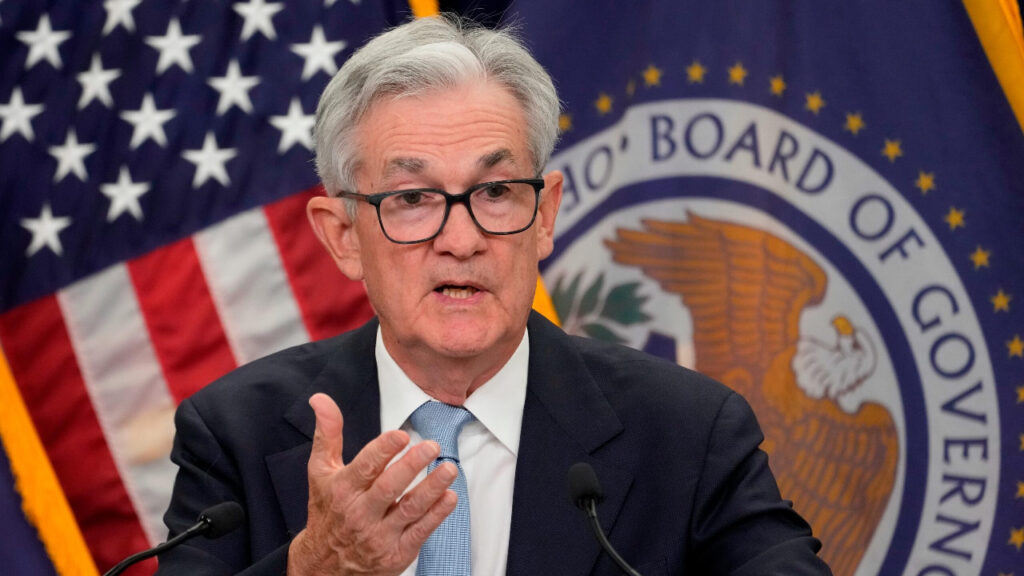The Stock Market experienced a sense of unease on Wall Street Friday as discussions to raise the debt ceiling stalled in Washington, culminating in a tense conclusion to the week of trading.
The pause in negotiations heightened concerns that a failure to reach an agreement could trigger an unprecedented financial crisis as early as June. Investor confidence wavered as optimism surrounding the earlier stages of the talks began to falter.
Adding to the apprehension, Federal Reserve Chair Jerome Powell’s comments cast doubt on the possibility of another interest rate hike next month. Powell suggested that a slowdown in bank lending might cool down both the economy and inflation, leading to increased pressure on short-term government bond yields.
Although major indexes started the day with gains, they took a downward turn after Congressional negotiators announced limited progress in the debt-ceiling discussions. The S&P 500 closed with a 0.1% loss, while the Dow fell by 109.28 points (0.3%) to reach 33,426.63. The Nasdaq Composite experienced a decline of 0.2%.
Despite these setbacks, all three indexes managed to end the week positively. Both the S&P and Dow recorded their first week of gains in May, and the Nasdaq climbed over 3% throughout the week.
Get Wall Street Journal Newspaper for $318
Despite ongoing concerns regarding a potential recession, the Stock Market has displayed resilience over the past couple of months. The continuous flow of data reflecting low unemployment, stable consumer spending, and strong corporate earnings, including reports from companies like Target and Walmart, has helped sustain momentum.
Nevertheless, the looming risks and the calm trading atmosphere have left some investors with an unsettling feeling heading into the weekend.
Mike Bailey, Head of Research at Maryland-based FBB Capital Partners, expressed his concerns, stating, “Markets are up, the VIX is down, and this debt-ceiling debate is right on our doorstep. The tactical setup from here is pretty bad, I think.” The VIX serves as a popular measure of stock market volatility.
Powell’s comments on Friday underscored these risks. Speaking at a Washington policy conference, he mentioned that reduced lending by banks following recent turmoil in the financial sector might introduce friction to the economy, potentially slowing down growth and dampening inflation.
Powell stated, “Our policy rate may not need to rise as much as it otherwise would have.”
Get Financial Times and Barrons Combo Digital Subscription for $129
Traders quickly adjusted their expectations in fed-funds futures markets, discounting the possibility of another rate hike by the central bank at the upcoming June meeting.
Short-term Treasury yields, which closely align with Fed rate expectations, initially experienced modest intraday gains but eventually recovered later in the afternoon, ending the day on a higher note.
The two-year yield rose to 4.287% from Thursday’s 4.269%, while the benchmark 10-year yield edged upward to 3.690% compared to the previous day’s 3.647%. Bond prices fall as yields rise.
Stock Market: Friday Decline, Positive Week Conclusion
Western Alliance, a bank that had raised investor concerns, reported on Wednesday that deposits had been growing this quarter. This announcement contributed to the KBW Bank Index’s 5.8% gain, marking its strongest performance so far in 2023.
Conversely, disappointing quarterly results from Foot Locker dampened the company’s stock price and raised concerns about how a year of persistent inflation was impacting consumer spending. The shoe retailer reported a year-over-year decline in same-store sales of over 9%, resulting in a 27% drop in its shares on Friday.
Earlier in the week, Home Depot executives noted a significant cooling in Americans’ spending on home improvements, contributing to a disappointing quarter.

